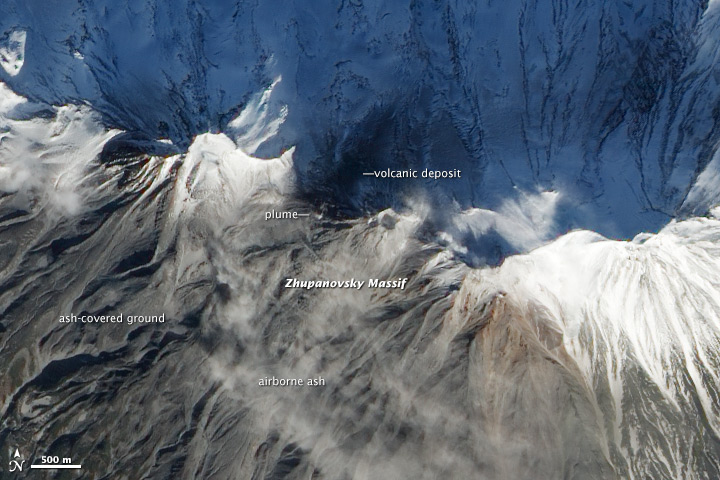
New Explosions Spotted at Snowy Russian Volcano

A remote Russian volcano may be readying for a new eruption, according to NASA's Earth Observatory. On Nov. 5, NASA's Earth-Observing 1 satellite spotted ash above the 9,702-foot-tall (2,958 meters) Zhupanovksy volcano, which recently woke from a decades-long slumber. The snowy peaks also shows signs of phreatic explosions — the stupendous blasts that result from hot lava meeting snow, ice or water, the Earth Observatory reported.
Zhupanovksy's latest activity started on Oct. 23, when the volcano spewed ash 16,400 feet (5 kilometers) into the sky. It was the first explosive eruption at the volcano since 1959, according to KVERT, the Kamchatka Institute of Volcanology and Seismology, which monitors volcanic and earthquake hazards in the Russian peninsula. The initial blast of ash and volcanic gases was followed by several days of phreatic bursts and strong gas emissions from fumaroles (gas vents) at the peak, KVERT reported.
Read more: Smithsonian Global Volcanism Program
Email Becky Oskin or follow her @beckyoskin. Follow us @OAPlanet, Facebook & Google+.
Get the world’s most fascinating discoveries delivered straight to your inbox.

